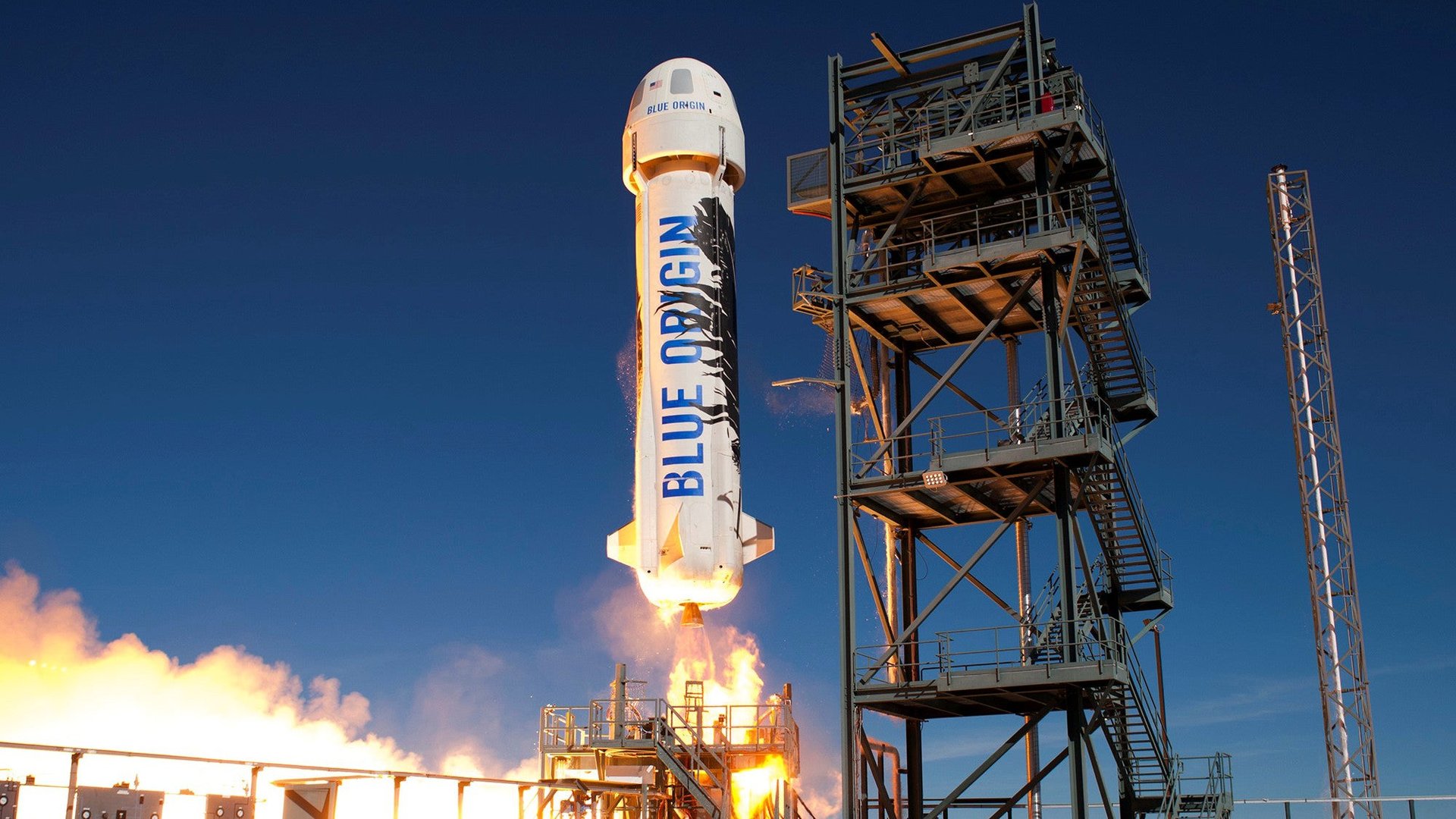Watch Jeff Bezos’ space company Blue Origin launch its space tourism rocket
Blue Origin launched its reusable rocket New Shepard, carrying a space capsule equipped with a dummy and a handful of scientific experiments, to the edge of space for the eighth time on Sunday (April 29).


Blue Origin launched its reusable rocket New Shepard, carrying a space capsule equipped with a dummy and a handful of scientific experiments, to the edge of space for the eighth time on Sunday (April 29).
The spacecraft reached an altitude of 107 kilometers (66 miles), which founder Jeff Bezos called “the altitude we’ve been targeting for operations” in a post-mission tweet.
After thunderstorms delayed the launch by several hours, New Shepard took off from the company’s Texas test facility, briefly flew into space, and nailed a rocket-assisted landing. You can watch a video of the launch here:
The flight lasted about 10 minutes, and both the suborbital rocket booster and space capsule returned safely to earth. Blue is testing the second version of its capsule ahead of planned human flight later this year.
The capsule carried a half dozen experiments that benefitted from the several minutes spent in microgravity as the capsule free falls at the peak of its ballistic trajectory. The experiments test systems such as wi-fi and life-support for future space missions, as well as instruments designed to study distant stars and meteorites. Finding a way to get experiments into this environment is a historical challenge for space researchers, and they are willing to spend hundreds of thousands of dollars to to do it.
This was the eighth launch of the New Shepard design, which debuted in 2015, and the second launch for this particular vehicle, which was built last year. Bezos says his company hopes to fly humans into space in 2018 and will soon begin flying regular trips ferrying luxury tourists to the edge of space. They’ll be writing their own rules as the new private space industry emerges.
The effort will inform the technology and prepare the public for Blue’s long-term goal of supporting millions of people living and working in space. Bezos says he intends to sell a billion dollars of Amazon stock each year to fund the space company that he founded in 2000.
Compared to its rival, Elon Musk’s SpaceX, Blue has kept its work under wraps; this the second time the company has shared a flight test in real-time, following a demonstration of its in-flight escape system in 2016. The New Shepard, while an award-winning piece of space technology, is a smaller and less extreme vehicle than the Falcon 9 rocket that has proven to be Musk’s workhorse.
But Blue Origin won’t be stopping at New Shepard and its attempts at routine space tourism. It’s also developing a powerful new engine and rocket for missions into orbit that will compete directly with SpaceX and the rest of the launch-vehicle industry.